Larissa
Larissa is a modern city in central Thessaly, 360 km north of Athens. The Jewish population (third largest in Greece) is about 300 people. Extant sites: a functioning synagogue, a cemetery and a modern monument to victims of the Holocaust.
Historical background:
The Jewish Community of Larissa is ancient. A community existed before the Common Era, probably established during the Roman period. According to many historians and travellers (Benjamin de Tuleda – 12th century) who visited the city, it has had a live presence for at least 1900 years. This is also proved by several archaeological findings with Jewish symbols that were found during excavations in the city.
During the 15th century, the Jewish Community of Larissa absorbed Jews from Hungary, Poland, etc fleeing the pogroms (Ashkenazim), from Spain (Sepharadim) and from the Peloponese (Moraitis). Upon the considerable arrival of Spanish Jews (Sepharadim), who came to Greece after their expulsion from Spain in 1492, the community took its final form. The Spanish Jews mingled with their fellow-Jews, passed on their culture and language to them, and contributed not only to the development of the community, but to the progress of the entire city, as well. In the beginning, they established a separate community in Larissa, but later on, with the guidance of learned rabbis, they united into one of Sefaradic rite, still existing today.
The Community of Larissa developed significantly between the 15th and the 18th centuries, when it was given the title “Madre d’ Israel”. Close connections were maintained with other Jewish communities in Salonika, Izmir, Adrianopoulis and even Sarajevo. The Beth Din (Rabbinical court) of Larissa and its learned rabbis were widely respected.
Most of the Jews of Larissa lived, and still live today in an area called “Exi Dromoi”, also known as “The Hebraica” (“The Jewish Quarter”). The Jewish quarter of Larissa did not have the form of a “ghetto” like was the case in other cities.
In 1857, a fire destroyed much of the Jewish quarter as well as two of its seven synagogues. The coincidence of this and similar fires in other Jewish communities reflects the tense atmosphere that prevailed during the Crimean war. The close association of Turks and Jews brought out a wave of xenophobic responses to the Jews in general throughout Greece, as well as in Turkish-occupied areas.
By 1860, the synagogues had been rebuilt with assistance from European Jews, In 1865, a school of the Alliance Israelite Universelle was founded. Both this school and the Yeshiva played an important role in lifting the intellectual life of the community.
The community in 1882 numbered 2,800 Jews, mostly involved in mercantile activities. After the absorption of Salonika into the Greek state in 1913, many Larissan Jews went there to establish business, while others moved to Athens.
By 1940, there were approximately 2,000 Jews in Larissa. When the Germans sized this part of Greece, the Larissan Jews had already played a notable role in the resistance and a good number had taken to the mountains as partisans. In 1943, when the Germans began their mass arrests throughout Greece, most of the remaining Jews of Larissa also took flight to the mountains. The 250 Jews who had remained in town were arrested and sent to Auschwitz, where most perished.
At the end of the war, the Jews returned and re-established a community that is still quite active. Only the Etz chayyim synagogue remained of Larissa’s seven synagogues. It had been severely damaged but was rebuilt with the assistance of Joint, and is in use until today. A small Jewish school still exists (although with very small number of children).
Sites of interest
The synagogue:
It is located at 29, Kentaraun St., at the intersection with Kyprou St. The synagogue is normally open for services on Shabbat and holidays. To organise a visit, contact the community offices:
Holocaust monument:
The Monument of Jewish Martyrs of the Holocaust is built in front of the synagogue, on the square called Plateia Evraion Martyron Katohis (Square of the Jewish Martyrs of the Holocaust), at the centre of the city .It was unveiled in April 1987.
The cemetery:
It is located in south of town, in the Alexandroupoleos district. It is normally kept locked, arrangements for visit should be made thought the community:
Based on Jewish Sites and Synagogues of Greece –
Nicholas P. Stavroulakis and Timothy J. DeVinney – Talos press

